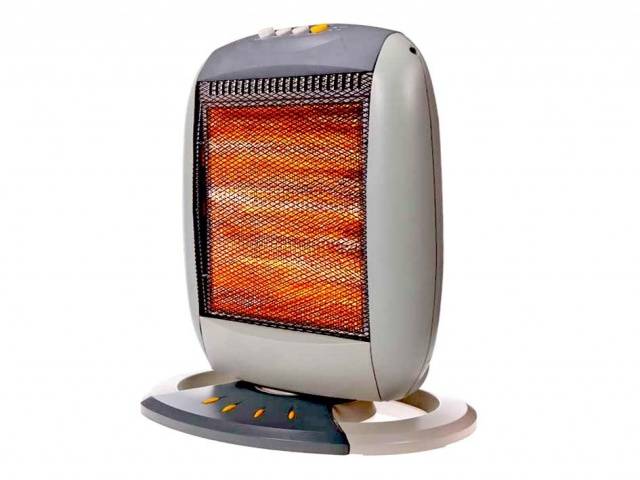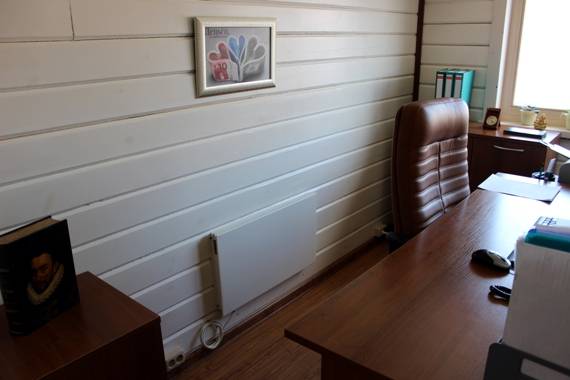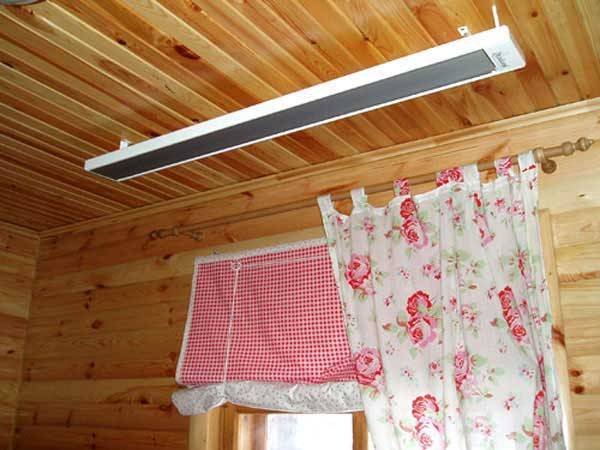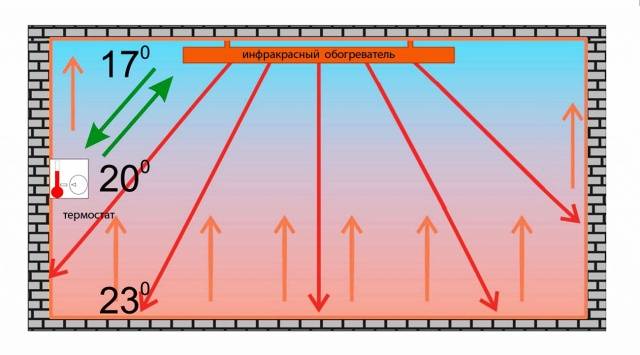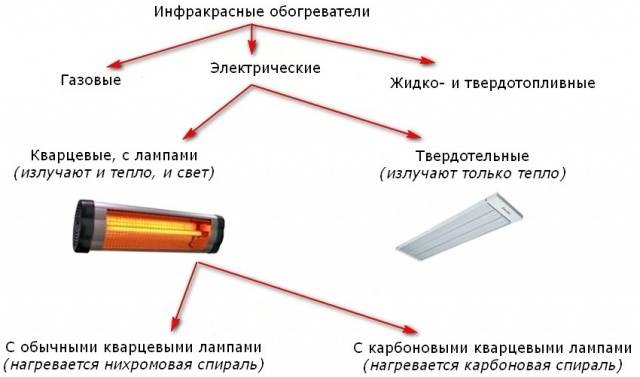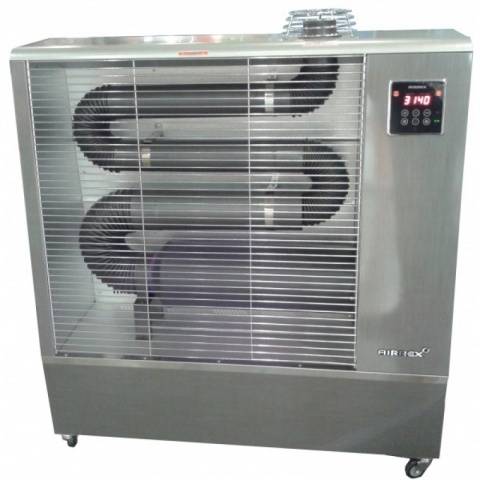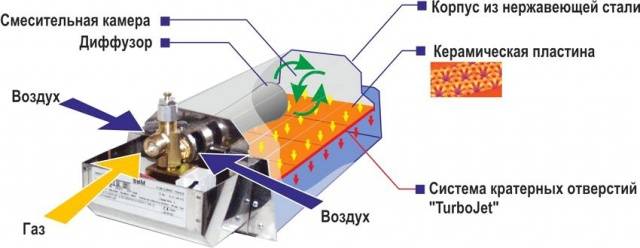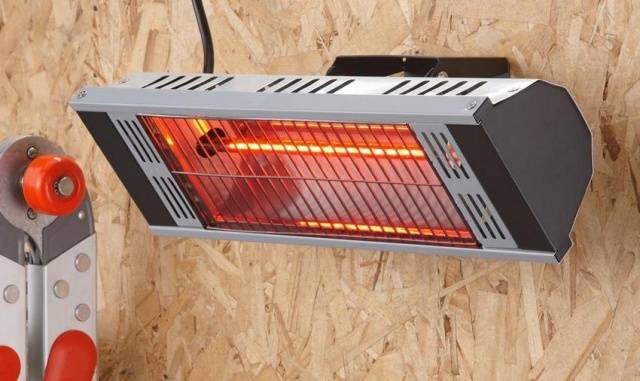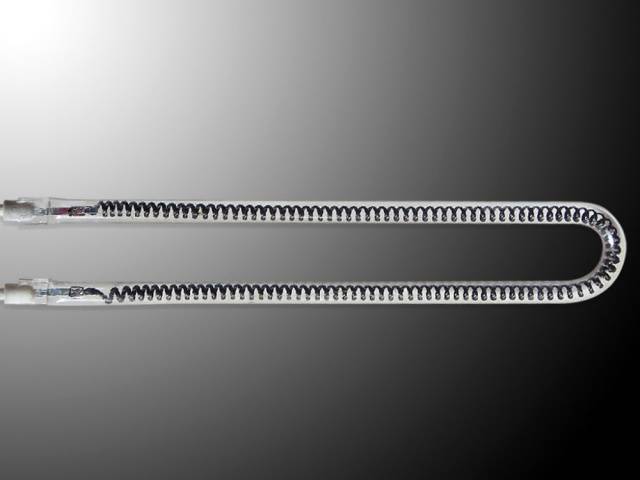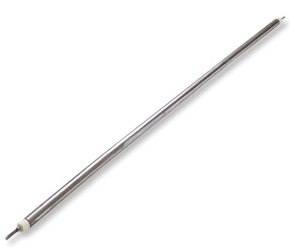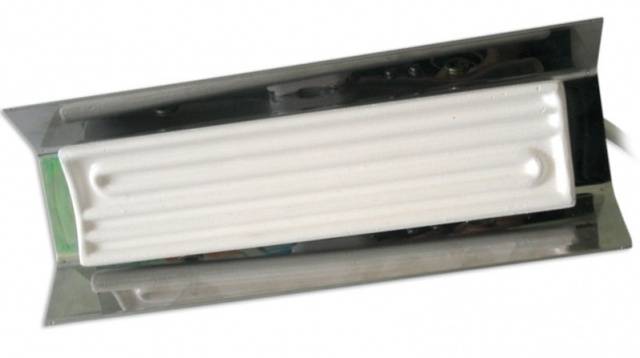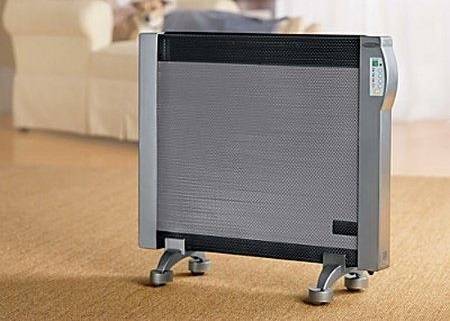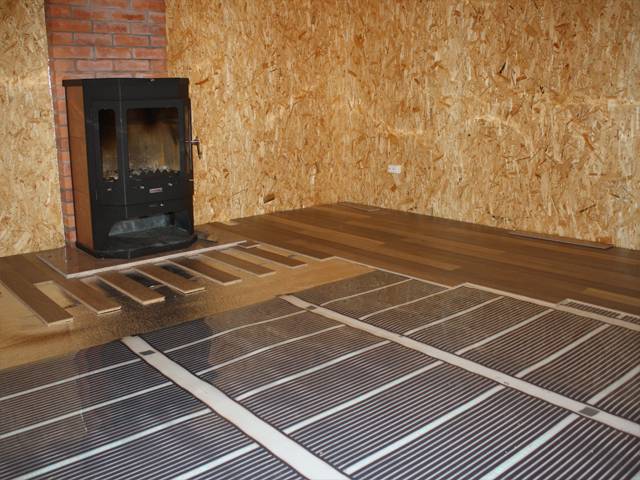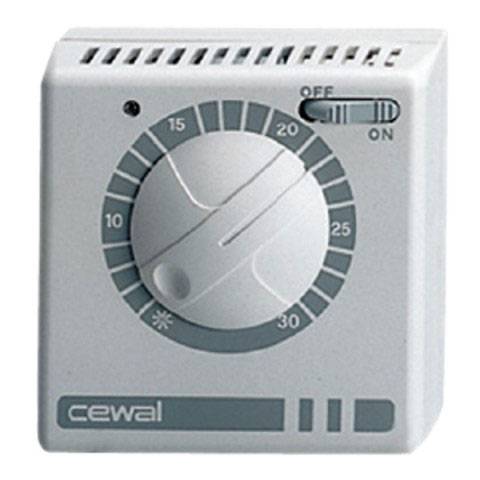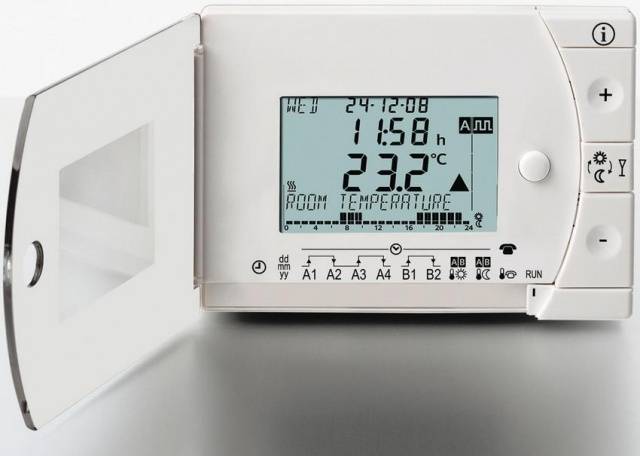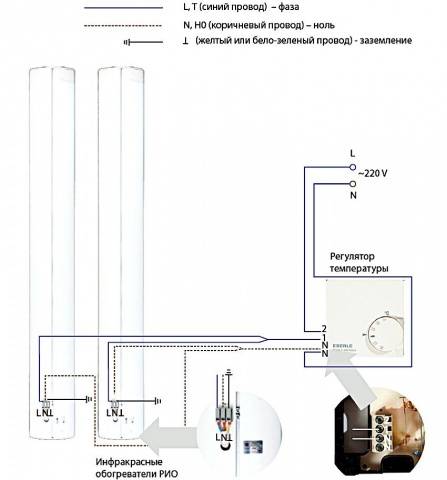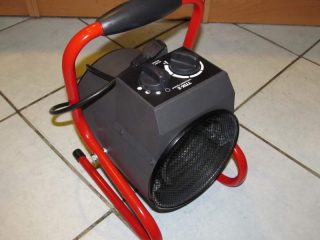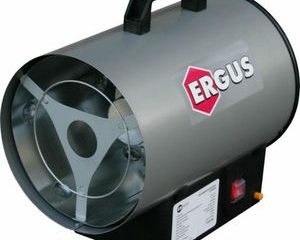Content
- 1 Classification of IR heaters
- 2 Film IR heaters
- 3 Types of thermostats, connection and principle of their operation
- 4 Summing up the selection of an IR heater for a summer residence
The traditional heating system for a country house is not always appropriate. The boiler will have to be constantly kept on, even when the owners are not in the country, so that the water in the radiators does not freeze. This is very unprofitable and dangerous. To save on heating will help infrared heaters with a thermostat for summer cottages, quickly heating the room before the arrival of the owners.
Classification of IR heaters
Let's not go into the details of the general advantages and disadvantages of IR heaters, since these indicators are present in any device. Now we will try to consider all types of infrared heaters, and let the user decide for himself what suits him best.
Difference of models by location
Probably, it will be right to start reviewing the differences in IR heaters in the place of their installation. This will help the summer resident decide on the choice of a suitable model.
Floor models
The ease of use of floor-standing infrared heaters is due to the free choice of the place of their installation. The device can be placed at will in any part of the room. Many floor standing models run on liquefied gas, which eliminates their attachment to the mains.
The use of floor models has several features:
- The floor-mounted device has a high efficiency of up to 99%. Many models use bottled propane-butane gas as fuel. The low cost of gas determines the efficiency of heating, plus its mobility. The cylinder with the heater can be moved to any desired location.
- Floor standing models are equipped with sensors. The device is able to turn itself off in the event of a rollover and in case of a lack of oxygen in the room.
Despite the shutdown sensors, you need to know that during operation the device burns oxygen strongly. Until the sensor has time to work, low oxygen levels will negatively affect a person's well-being. Ventilation must be ensured in the room where the heater is used.
Wall-mounted models
In appearance, wall mounted infrared heaters are nothing more than traditional radiators. The only difference is that the radiator is tied to the heating system and is installed at a certain height from the floor, while the IR heater can be fixed on any part of the wall.
Let's take a look at the features of IR wall heaters:
- The modern design of the models will not spoil the interior of any room. The installation of the appliance is not affected by the height of the ceiling. In large rooms, heaters are mounted around the entire perimeter of the building and always under the windows.
- To fix the device to the wall, you only need a few self-tapping screws with dowels. Installation is available to any inexperienced person.
Wall-mounted models are considered safe, since there is no possibility of accidental human contact with the heating element.
Ceiling IR heaters
The most popular infrared heaters with a thermostat for summer cottages are considered to be ceiling mounted. It is enough to fix the heating panel to the ceiling, and it will not interfere with anyone.
Ceiling IR heaters have their own characteristics:
- The best heating effect is achieved in rooms with high ceilings. Radiated heat is distributed throughout the room. In a house with low ceilings, the effectiveness of ceiling models will be low and it is better to refuse them.
- Installation of ceiling heaters is as easy as wall-mounted models. Fastening is carried out with the same screws with dowels.
- When mounted to the ceiling, the appliance can always be adjusted to your liking for better heat dissipation around the room.
Many ceiling heaters can be remotely controlled. This increases the comfort of their use.
Difference in radiation range and type of energy carrier
Infrared heaters have 3 groups of differences in the length of the emitted wave:
- The emission range of short-wave models is within 0.74–2.5 µm. These heaters are considered the most powerful. They are not used in homes or even shops. The devices are designed for heating large industrial buildings and railway stations.
- The emission of medium-wave models has a range of 2.5–50 µm. These devices are successfully used in all living quarters.
- Long-wave radiation from the heater is considered the safest. The wavelength range of 50-1 thousand microns has a beneficial effect on humans. Such models are recommended for child care facilities and hospitals.
All infrared heaters operate on a certain energy carrier, which further divides them into separate groups:
-
Diesel appliances work by burning liquid fuel, in this case diesel fuel. It is impossible to use such models for heating the summer cottage for safety reasons, and there is nothing to do with the unpleasant smell in the house.
-
Gas infrared heaters work from natural or liquefied propane-butane gas, pumped into the cylinder. It is possible to heat a residential building with a device, but it is unsafe. You need constant control over the operation of the heater and ensuring the flow of fresh air. For country use, this option is better to exclude.
-
Devices powered by electricityare the most common. They consist of an infrared emitter and a heat reflector. For a summer residence, this is the most profitable and correct choice.
Based on the differences considered, we can conclude that medium and long-wave infrared models powered by electricity are suitable for giving.
The difference between electric heaters by the type of heating element
All electric infrared heaters are equipped with a heating element. It is from him that the heat emanates, spreading throughout the room.
Tungsten filament
The most common heating element material is tungsten. Spirals made of this metal are used in all old heaters, primitive electric furnaces, etc. In infrared heaters, the tungsten filament is enclosed in a glass tube with a vacuum. Sometimes, instead of a vacuum, a mixture of gases is pumped into the tube. This heating element is called halogen. During operation, the spiral heats up to 2 thousand.0C. The disadvantage of the heater is the strong brightness of the emitted short waves during operation.
Carbon fiber heater
The carbon fiber coil uses carbon fiber.The principle of operation of the heater is the same as in the case of a tungsten filament, only in this case long waves are emitted. The carbon fiber spiral is enclosed in a glass tube with vacuum. The heater efficiency is 95%. The downside of the heater is its high cost and low structural strength.
Tubular heating elements
The design of the heating element resembles the already discussed heating elements made of tungsten and carbon fiber. The only difference is that the coil of the heating element is enclosed not in a glass, but in an aluminum tube. In infrared heaters, several heating elements are usually installed on an aluminum plate with a maximum heating temperature of 300aboutC. The design of the heater on heating elements is considered to be durable. The only drawback is the weak crackle of the element when heated.
Ceramic heater
The design of the heater consists of a coil that heats the ceramic panel. The top of the ceramics is treated with a special glaze coating. The efficiency of the ceramic heater is at least 80%.
Micathermic heater
The working element of the micathermic heater is made of special alloy plates treated with mica. During the passage of an electric current through them, infrared waves are emitted. The plates are heated to a maximum of 60aboutC, which eliminates the possibility of getting burned when touching them. Micathermic heaters have a modern design. Their disadvantage is their high cost and low efficiency, amounting to a maximum of 80%.
Film IR heaters
An excellent option for heating a dwelling can be infrared film heaters. They can be laid on the floor or ceiling of the room.
Floor heating foil
The film serves as a source of IR radiation. It is laid directly under the floor covering. So that the radiated heat is directed only towards the room, a heat insulator is placed under the film - an isolon. The thermostat controls the operation of the film. It turns out a kind of "warm floor" system, fireproof and very profitable for summer cottages.
Film for heating ceilings (PLEN)
The principle of operation of the PLET ceiling film is the same as for the floor. It is attached to a rough ceiling with a substrate of the same isolon. The film is connected to the electrical network through a thermostat. Maximum heating temperature - 50aboutC. It is effective to use PLET together with a flooring film, however, the initial costs for its purchase are quite significant.
Types of thermostats, connection and principle of their operation
The thermostat is responsible for the operating modes of the heater, that is, it regulates its heating temperature. There is a second name for a thermostat - a thermostat. The principle of operation of the thermostat is to capture the ambient temperature by the sensor. According to the specified parameters, the sensor sends a signal to the electronic circuit, which is responsible for supplying or disconnecting the voltage going to the heating element of the infrared heater.
Some models of IR heaters come with built-in thermostats. If not, you will have to install it yourself.
Thermostats are selected according to the heating temperature of the heaters, and they are:
- high-temperature - 300-1200aboutFROM;
- medium temperature - 60-500aboutFROM;
- low temperature - up to 60aboutFROM.
There are 2 types of thermostats:
-
Mechanical devices are intended for manual setting of the temperature regime on the scale by turning the lever or by pressing the button. The advantage of the thermostat is its low cost, the disadvantage is that it is impossible to set the exact temperature.
-
Electronic models more accurate. They have a programming function. Change of operating modes is carried out on the touch screen or by buttons. The disadvantage of electronic thermostats is the high cost and complexity of control.
When connecting a thermostat, several rules are followed:
- the maximum height of the thermostat from the floor is 1.5 m;
- to obtain accurate readings, a heat insulator must be placed under the thermostat fixed to the wall;
- only 1 heater can be connected to the thermostat;
- it is necessary to adhere to the compliance of the power of the thermostat and the heater;
- the installed thermostat must not be touched by any objects.
According to the method of installation, thermostats are of a hidden and open type. The connection diagram is shown in the photo.
The video tells about the UFO IR heaters:
Summing up the selection of an IR heater for a summer residence
Already to what we have considered, it remains to add that for economical heating of a summer cottage, a device with a thermostat will definitely be required. The answer to the question of how to choose an infrared heater for a summer residence will first of all be determining the location of its installation. If there is gas at the summer cottage, then it is advisable to give preference to gas infrared devices for heating the veranda, terrace and other similar ventilated rooms. For residential premises, only electric models are definitely suitable. Which one to choose depends on the preferences of the owner and his money.
When installing infrared heaters for summer cottages on your own, one rule must be taken into account, the thermostat should not fall into the field of infrared radiation and the sun's rays should not fall on it. And in choosing the right device, our advice and recommendations from sellers of electrical goods will help.
